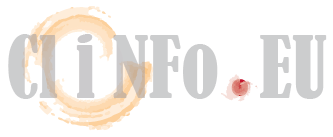A quick guide to your non-interventional study (NIS planner)

Contrary to the outdated image of the non-interventional study (NIS) as a pure marketing instrument, this kind of study is particularly suitable for emphasizing the effectiveness, efficiency and safety of a drug under real life conditions. Within the recent years, the call for observational real-world-data gained in its strength, as well as the demand for insights into the patients’ requirements, wishes and preferences. Therefore, NIS experience a well-founded period of blossom.
However, the field of NIS is broad – depending on the scientific question of the project, one can choose from a large variety of NIS subtypes determined by different study designs. The following NIS planner infographic serves as a quick guide for the planning of your NIS. It navigates you along the core pillars of study conceptualization and helps you to determine the fundamental cornerstones of your NIS.
What to keep in mind when planning a non-interventional study?
Type of NIS
decisive: scientific questiondesign: sample size, observation period, endpoints?
– single-arm observational study
– comparative study (two- or multiple-arm)
– hypothesis free study (e.g. registry)
Countries of interest
licensing and marketing authorization?healthcare situation and clinical routine?
geographic & cultural features?
process of ethics’ submission?
notifications and authorities?
reporting requirements?
Site selection
resident doctors vs. hospitalscontracts & reimbursement
routine parameters?
documentation effort?
strategy of site recruitment?
number of centers?
inclusion period?
experience in clinical research?
scientific interest?
Data documentation
data structure?categorical variables vs. free text
laboratory parameters?
EDC vs. Paper
number of patients?intervals between documentation?
requirements for data availability?
requirements for sharing information?
cleaning and plausibility checks?
Pharmacovigilance
reporting obligations?
study requirements?
adverse drug reactions (ADR) reporting
vs. full safety reporting
Monitoring
patient informationinformed consent for access of
third parties to patient file
Further information & contact
For further details, please also refer to our recent publication in “Pharmazeutische Medizin” 02/2016, where we elaborate on the most frequently asked questions during the planning of a NIS. The article is available in German, only.
Picture: @chaiyapruek /Fotolia.com









